Combining multiple styles at home is becoming increasingly common, but it’s not always easy.
A less-than-harmonious result is just around the corner if you’re not careful.
In the times of our grandparents, there wasn’t much choice, and homes were more or less furnished in the same style.
Nowadays, things are very different, and there are numerous possible home styles (here, I’m talking about the main ones!), making the choice not always straightforward.
And if selecting a single style is challenging when you’re alone, it becomes even more evident when sharing your home with your partner!
It’s unlikely that you both have the same tastes, yet the home should represent both.
The only way is to combine multiple styles but to achieve a harmonious and cohesive result, it’s essential to follow some precautions.
1 – IDENTIFY THE STYLES
The first thing to do is individually identify your own style and, from that, understand what you like the most, such as the color palette or typical shapes of that design.
Having clear ideas will make it easier to combine the styles.
Otherwise, the risk is buying things that, when put together, don’t work well and aren’t liked by either of you!
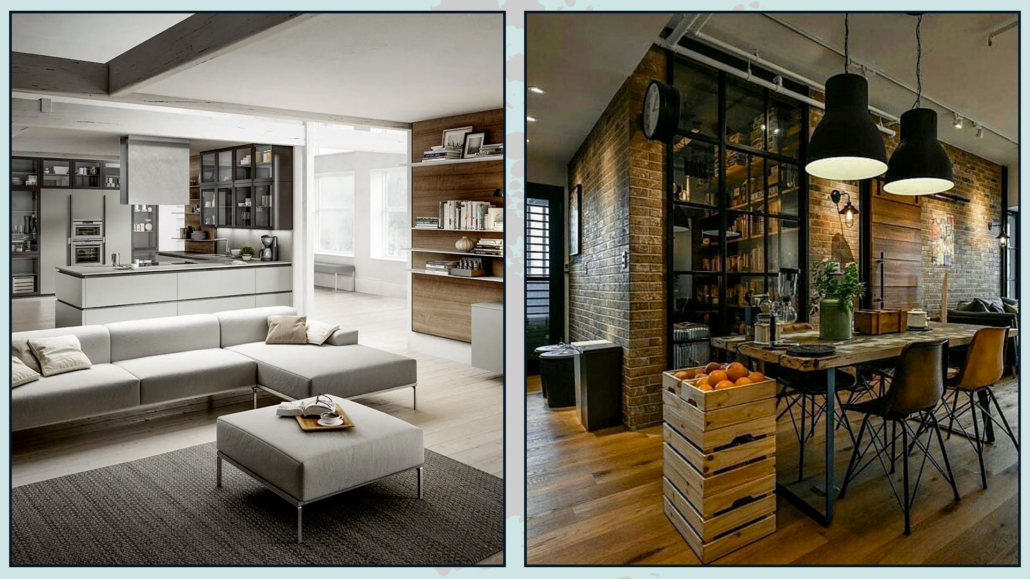
(credits: myshambar; meka)
2 – USE THE 80/20 RULE
The 80/20 rule suggests choosing a primary style, perhaps for hugger furniture and major decor elements, and a secondary one to complement it.
Having a dominant style allows you to create a cohesive and harmonious environment, while the secondary one adds a bit of rhythm and visual interest.
The key is to avoid competition between the two styles!
For example, you could have a predominantly modern/contemporary setting with some elements showcasing a classic taste, like a table or a sideboard!
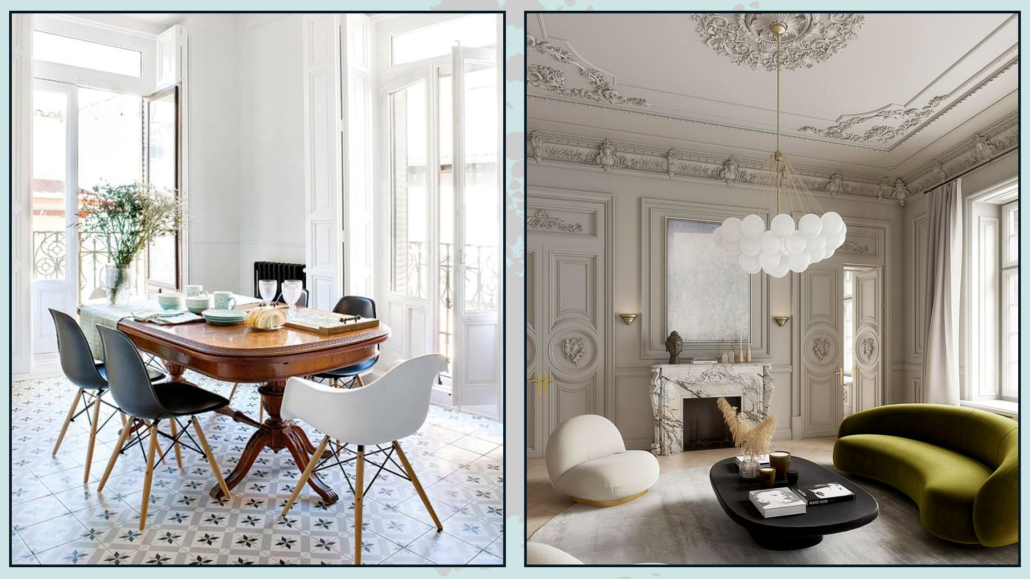
(credits: Atelier HR; yoon-molduras)
3 – CREATE A FOCAL POINT
Use the secondary style as a focal point!
Sometimes, a single detail in a different style can transform an environment, giving it a unique character.
It can become the focal point, drawing the eye!
Imagine, in a predominantly modern/contemporary space, having a large mirror or a magnificent antique chandelier, etc.
Creating a focal point this way helps create emphasis, a fundamental interior design principle!
Look for elements that characterize the secondary style to create balanced and impressive spaces.
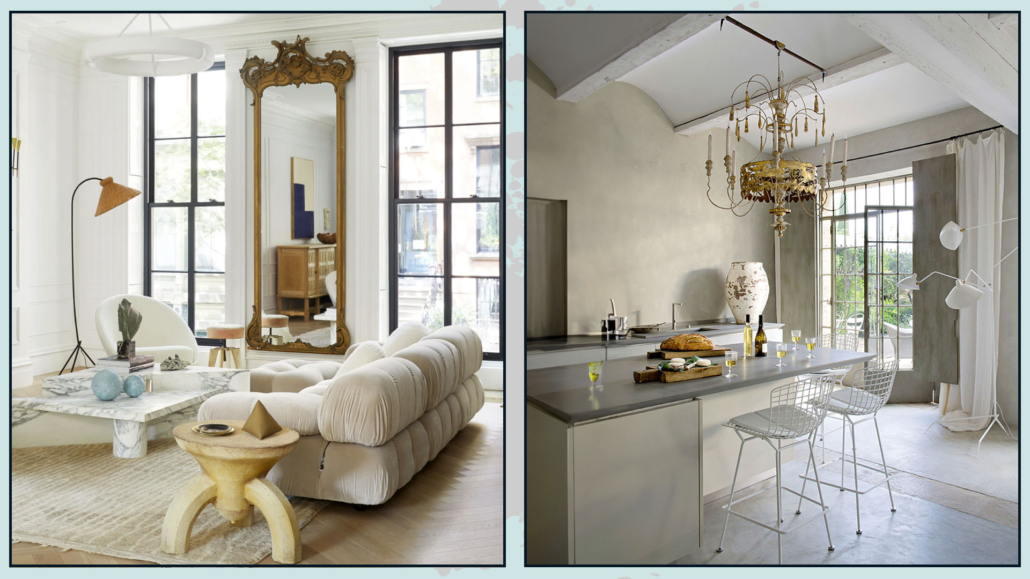
(credits: Elizabeth Roberts Architecture; weranda.pl)
4 – FURNISH NEUTRALLY AND DECORATE IN STYLE
You might also consider keeping the hugger furniture and accessories as neutral as possible.
Opt for linear, simple, and clean elements capable of adapting to almost any style.
Then, add character with decorations and slighter elements.
This approach is fantastic if either or both of you enjoy changing things up frequently!
Buying new furniture can be relatively expensive while changing decorations is more budget-friendly.
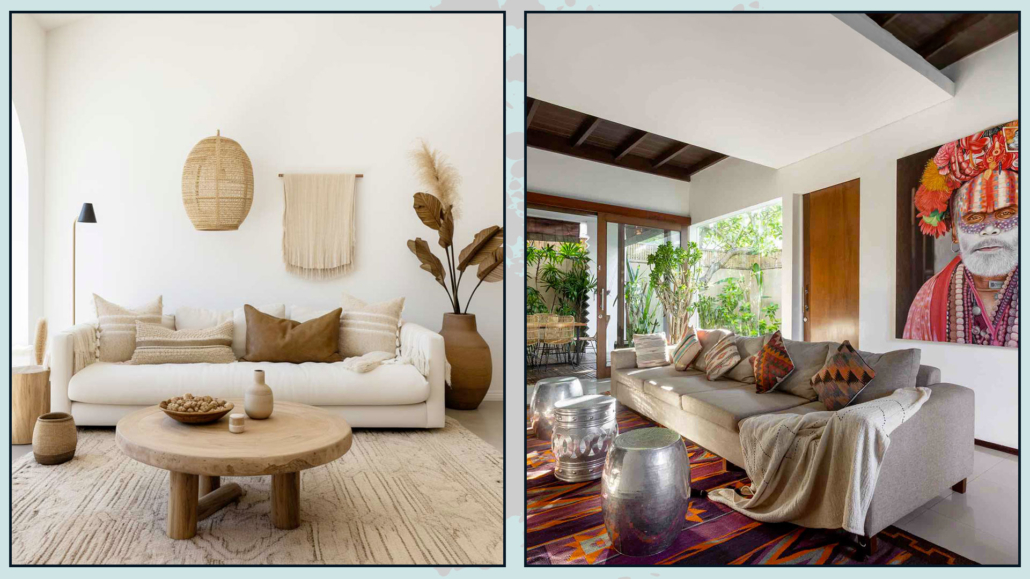
(credits: artfasad.com; Getty Images)
5 – USE COLOR
Color has the power to unify!
Having a consistent color palette will undoubtedly make it easier to combine two different styles and create a harmonious and cohesive environment.
Like the previous point, you might consider keeping walls more neutral (except for a possible focal point) and hugger furniture while using color in decorations and slighter elements.
Once again, it’s a way to facilitate changes without breaking the bank every time!
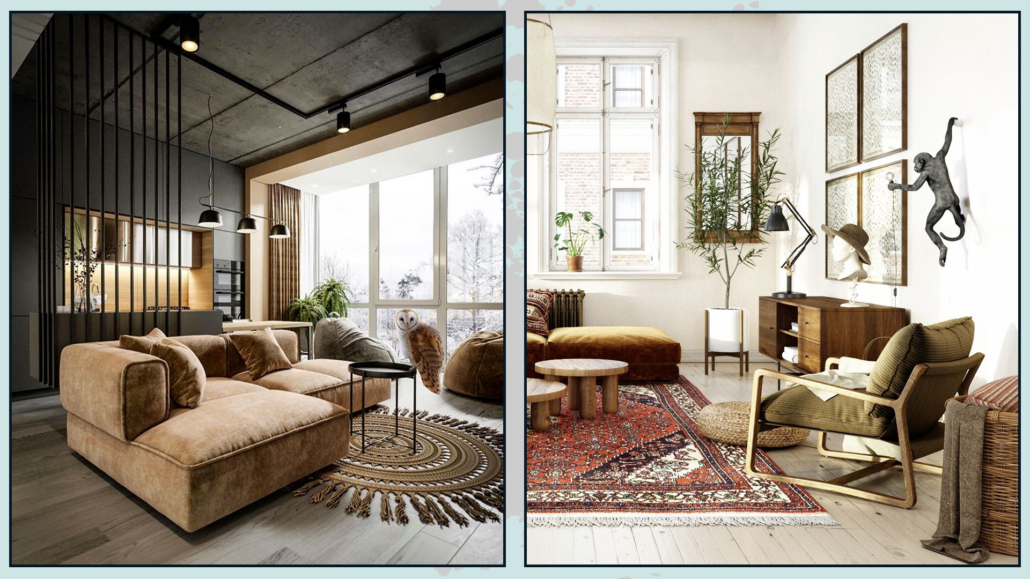
(credits: Orange I5; anthologycreatives.com)
6 – LOOK FOR COMMON GROUND
Search for as many common elements as possible between the styles!
In addition to color, it could be shapes, textures, or the use of metals or wood as well.
If you’re dealing with different metals or woods, pay attention to how you mix them—I suggest watching the videos where I discuss this (here metals and here wood)!
Common elements will serve as a guiding thread, tying together diverse elements cohesively and harmoniously.
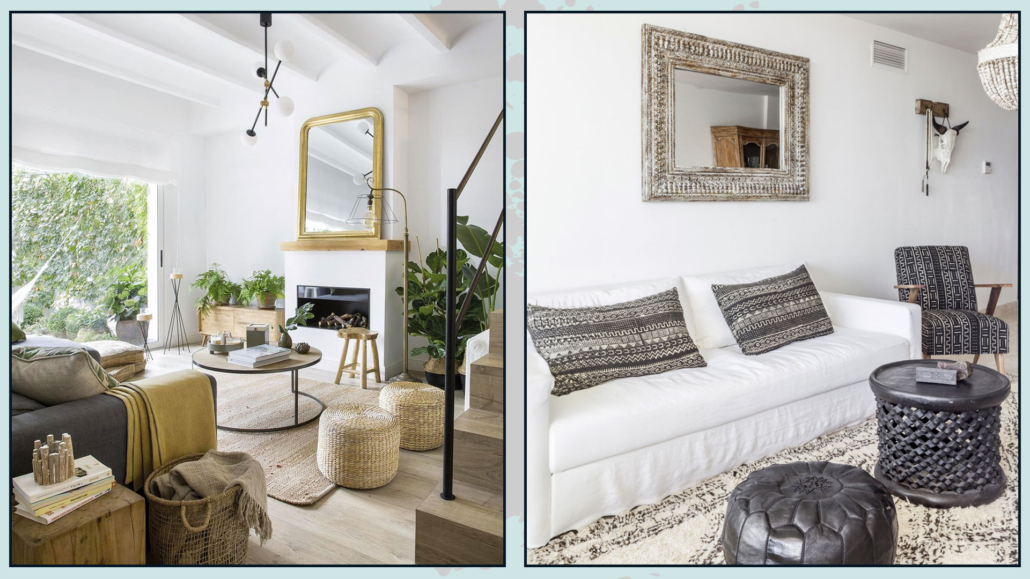
(credits: Montse Morales; Zoco Home)
7 – START IN SMALL DOSES
Combining multiple styles throughout the house might be intimidating, and there could be a fear of an unpleasant result.
My advice is to start in small doses, creating small vignettes or compositions for the coffee table or console!
That will help you build confidence, see the results, and eventually adjust things without breaking the bank.
You’ll find it much easier if you’ve furnished it linearly and neutrally, as explained in point three.
You can always add more significant pieces once you understand what you both like!
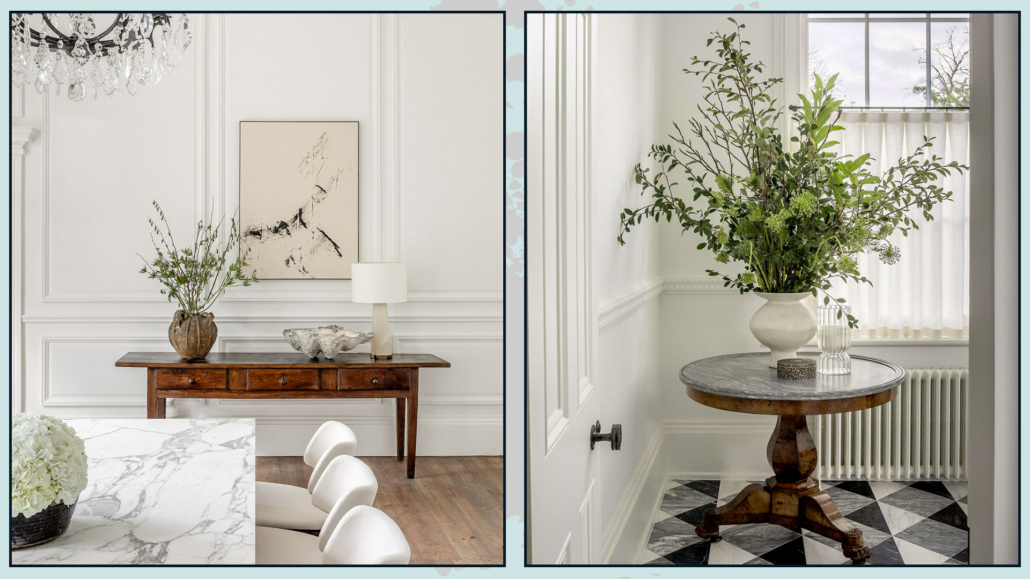
(credits: covetnoir.com)
8 – BALANCE
Balance is always the key to having beautiful and harmonious spaces. Make sure that the styles are well distributed in the room and not concentrated in one single area.
Ensure the two styles blend together throughout to create a sense of rhythm.
Proper distribution will balance the different visual weights that inevitably come with the two styles, creating harmony and equilibrium.
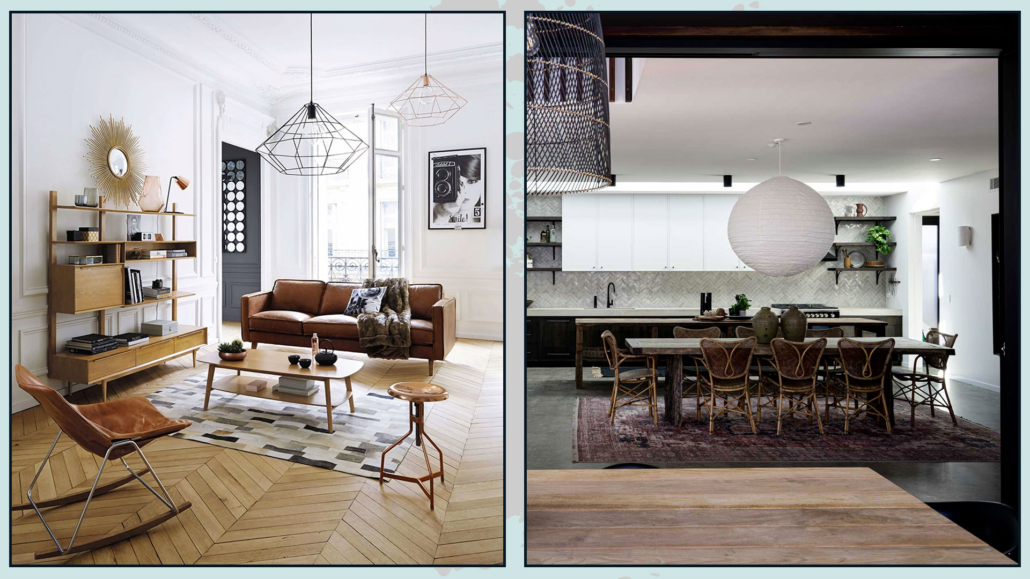
(credits: Maisons du monde; the-designory)
ANOTHER TIP
Following the previous points will help you create environments that represent both of you!
However, it’s also fair for each of you to have a small corner all to themselves!
If you have a small study, that could be it, or a corner of the bedroom.
Alternatively, for example, if you have two bathrooms, each person could have their own, furnished and decorated ONLY with their style!
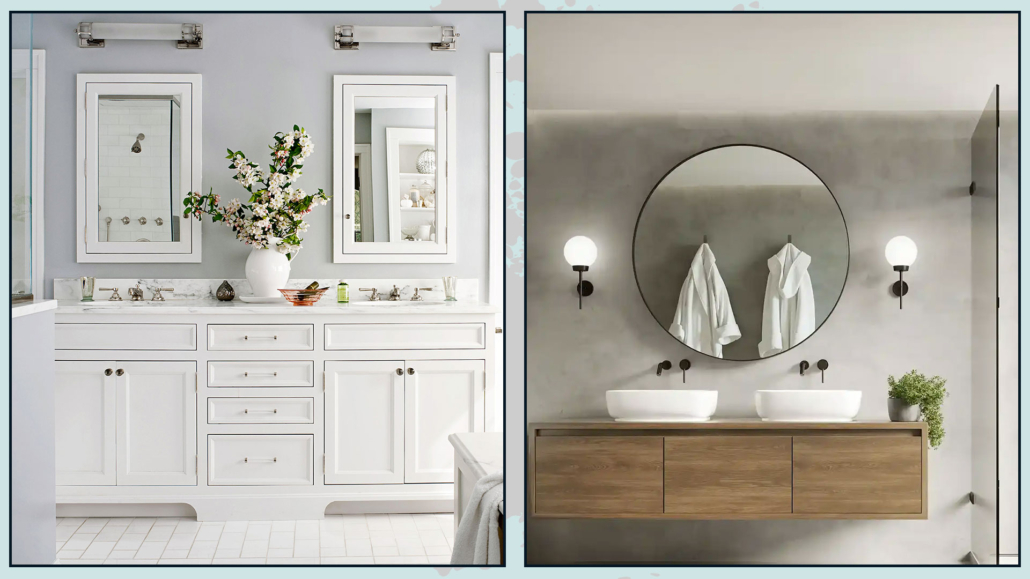
(credits: bhg.com; behomecasa)
I hope this article has been helpful and enjoyable for you. If so, let me know in the comments!
Feel free to share it with anyone you think might be interested, I would be honored, and it will help me gain more exposure.
If you feel that your home, or any specific area of it, doesn’t reflect your personality enough, don’t wait any longer and book your consultancy!
